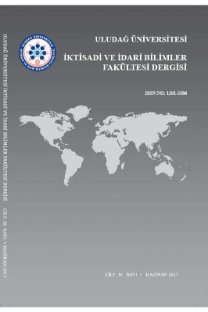Zaman Serilerinde Değer Tarama Süreçlerini Modelleme ve Performans Analizi
___
Bayhan, M.: Kalite Kontrolünde zaman serisi analizi, Endüstri Mühendisliği Dergisi,21:17-21.Box, G.E.P ve Jenkins, G.M. (1976), Time series analysis : Forecasting and control,Sect 6.4.3 San Francisco: Holden-Day.
Chang, IH., Tiao, George. C., Chen, Chung. (1988), Estimation of time series parameters in the presence of outliers., American Statistical Association and the American Society for Quality Control.
Corlett, D. ve Lewis, T. (1976), The subjective nature of outliers rejection procedures., Applied statistics, 25, no:3 s: 288.
Fox, A.J. (1972), Outliers in time series., J.R. Statist. Soc. B, 34, 350-363.
Kurt, S. (1990), Çok etkenli deneylerde tek sapan değer çözümlemesi, seminer notları, E.Ü Fen Fakültesi İstatistik Bölümü. Bornova-İzmir.
Ljung, Greta .M., Box, G.E.P. (1979), The likelihood function of stationary autoregressive-moving average models., Biometrika, 66, 265-270.
Pena, D. (1987), Measuring the importance of outliers in ARIMA models in New perspectives in theoretical and applied statistics., Newyork: Wiley.
Tatlıdil H. (1981), Doğrusal regresyonda ve çok değişkenli verilerde kuşkulu gözlemlerin testi., Basılmamış doktora tezi., Hacettepe Üniversitesi., Ankara.
Tsay, Ruey S. (1988), Outliers, level shifts, and variance changes in time series: Journal of forecasting., 7: 1-20.
- ISSN: 1301-3386
- Yayın Aralığı: Yılda 2 Sayı
- Başlangıç: 2018
Bootsrap Yönetiminin Ridge Regrasyonda Uygulanması
Büyük Bir İktisatçının Metafizik Değer Yargılarına Bakışı: Joseph A. Schumpeter'in Vizyon Kavramı
Türkiye'nin Cari İşlemler Dengesi Açıkları ve IMF'ye Olan Bağımlılığı
Öngörü Tekniklerinin Doğruluk Kıyaslaması: Basit Ekonometrik, ARMA ve ARMAX Teknikleri
Hüdaverdi BİRCAN, ZAFER KARTAL
Şans Oyunlarına İlişkin Bir Araştırma
Elektronik Ticaretin Ticari ve Mali Etkileri: Dünya ve Türkiye Üzerine Bir Değerlendirme
